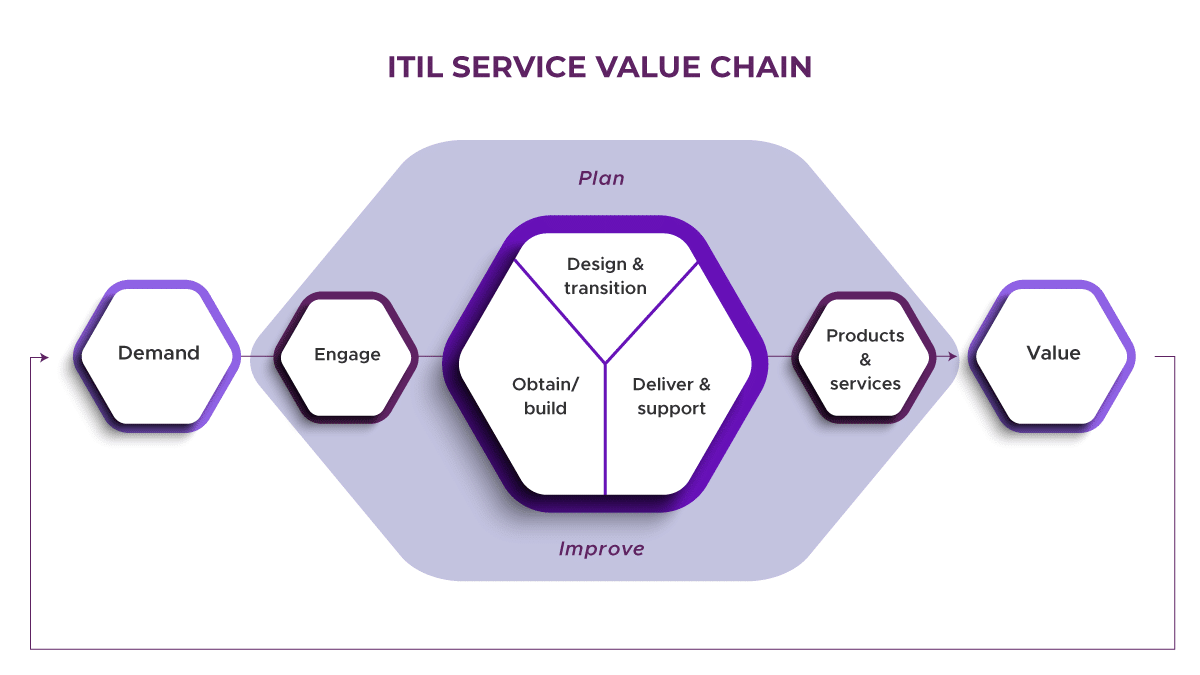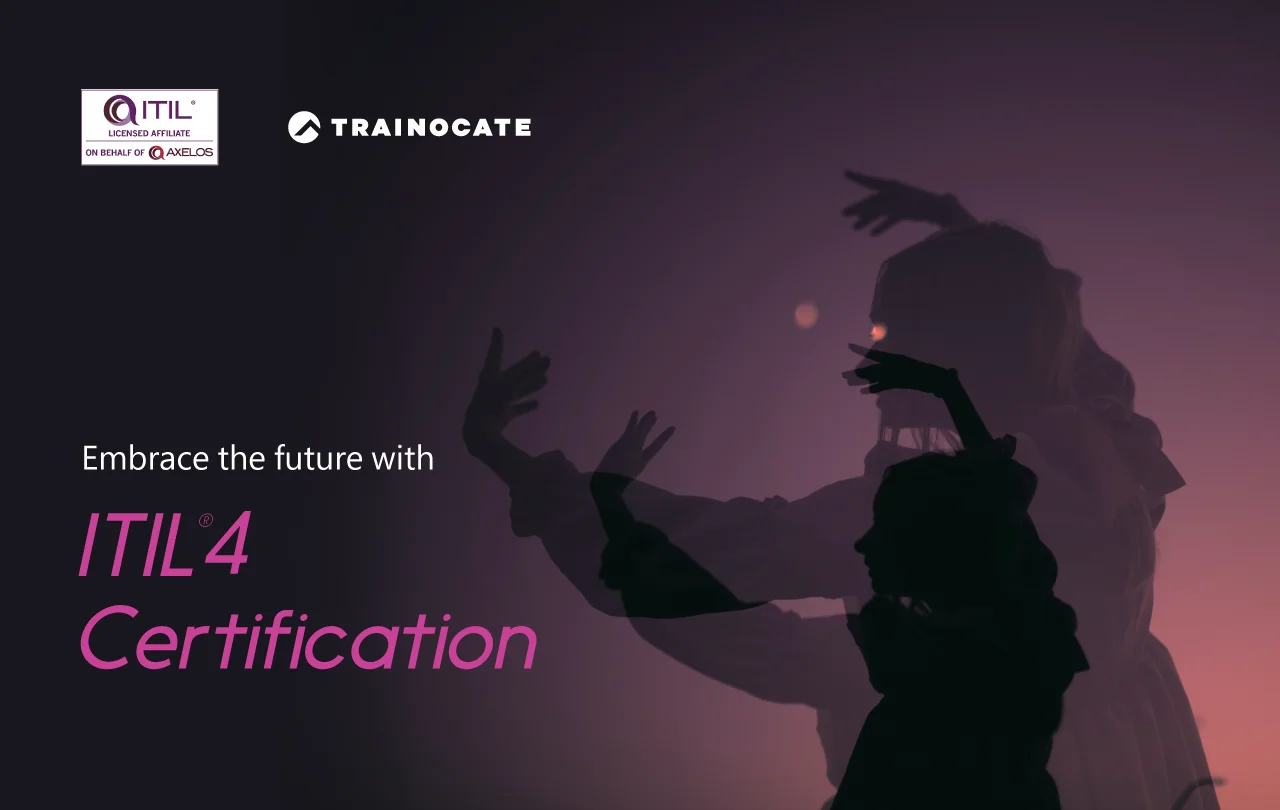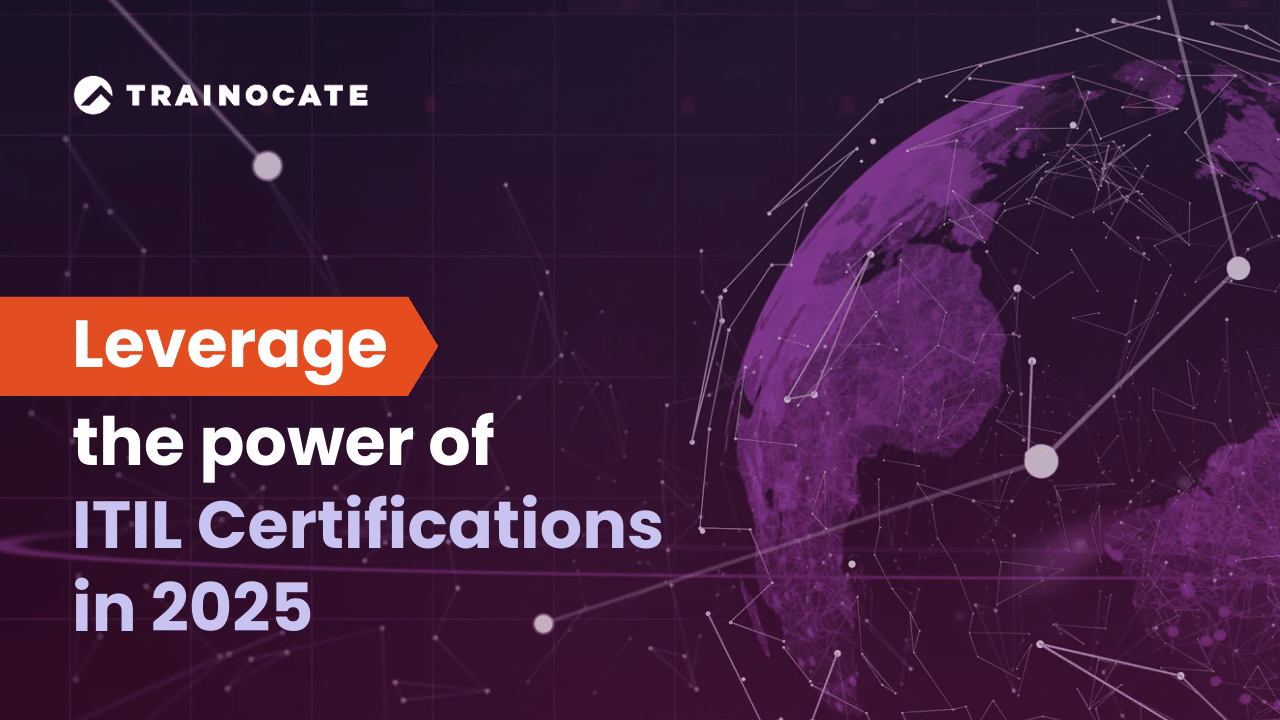ITIL and all you need to know about the Service Value Chain
ITIL and all you need to know about the Service Value Chain
ITIL 4 is the latest version of ITIL.
ITIL 4 provides a digital operating model that enables organizations to co-create effective value from their IT-supported products and services.
The newest iteration of ITIL 4 builds on ITIL’s decades of progress, evolving established ITSM practices for the wider context of customer experience, value streams, and digital transformation. ITIL 4 also promotes greater alignment with new ways of working, such as Lean, Agile, and DevOps, to co-create business value.
ITIL 4 defines a service as:
“A means of enabling value co-creation by facilitating outcomes that customers want to achieve, without the customer having to manage specific costs and risks.”
ITIL 4 can help you to:
- Understand how IT impacts strategy and how professionals can utilize the four dimensions of service management in a wider business context
- Use the guiding principles to navigate change, streamline work and introduce flexible and collaborative working practices
- Break down silos by encouraging a holistic, systems-thinking approach to value co-creation
- Build trusted relationships with stakeholders and develop effective and timely communications
- Work with complex, adaptive systems and flexible processes that can adapt to changing environments
- Learn the common language of IT-enabled service delivery, to boost your digital career progression and set you apart from your peers.
Value: ITIL 4 defines value as “The perceived benefits, usefulness, and importance of something.” It is vital to understand that value is not absolute. We can only measure the value of our services to our customers if we understand how the customers perceive them.
Outcomes: There is a difference between service outputs and service outcomes. An outcome is a result that is enabled by the outputs of a service. For example, an output of a wedding photography service might be a photo album, but the outcome is the happy memories that are evoked when looking at the album.
This blog post aims to provide imperative insight into the ITIL Service Value Chain.
But before we jump into the smaller details of the Service Value Chain, we first need to understand a little about what the Service Value System consists of.
The ITIL service value chain defines six key activities that can be combined in many ways, forming multiple value streams. The service value chain is flexible enough to be adapted to multiple approaches, including DevOps and centralized IT, to address the need for multiple models of service management. The adaptability of the value chain enables organizations to react to changing demands from their stakeholders in the most effective and efficient ways. (Ref: ITIL4 book from AXELOS®)
It might seem complicated but essentially, the Service Value Chain is an operational model which sits at the core of the Service Value System. It is responsible for providing a new way to view and manage services. In essence, it coerces organizations to divide all activity into two categories – the demand that triggers activity and the value It could create.
The Service Value System could be described as the ‘big picture architecture of the ITIL 4, designed and developed with the aim of assisting service organizations to choose a more holistic approach to service management.
There are four essential components to ensure you have been enabled to deliver your business:
- 7 Guiding Principles of ITIL
- ITIL 4 Practices
- Continual Improvement
- Service Value Chain
The aforementioned elements are essential as most of them are interconnected. Nothing stands in isolation in ITIL 4. An operating model without governance will quickly lose alignment with what your business needs. An operating model cannot function without practice. It won’t get better without continual improvement. And it is unlikely to improve in the right direction without good guiding principles.
The extent of the Service Value Chain
The Service Value Chain is the model which shows how the components and activities work together to achieve the three main goals of service management:
- Run the business – Deliver value from services today (by operating the “Live” Service Portfolio).
- Grow the business – Improve services (incremental innovation) to deliver more value, make customers even happier, reduce costs, and eliminate risks to make services more resilient (high availability).
- Transform the business – Create new services (radical innovation) to satisfy new customer demands (new definitions of value) and bring them into production—redefining the way the organization operates, the products and services it offers to customers, and how it interacts with customers (transforming the customer experience).
In ITIL, there are six activities in the service value chain which represent the steps an organization takes in the creation of value:
- Plan – All types of planning, at all levels
- Engage – Any and all interactions with people who are external to the service value chain (employees, customers, management, partners/suppliers)
- Design and Transition – Business analysis and development of new and improved services
- Obtain/Build – Any new resource brought into the value chain is sourced via obtain/build
- Deliver and Support – Provisioning services and providing help and information
- Improve – Improvements at all levels
Each activity contributes to the value chain by transforming specific inputs into outputs. The inputs could be demands from outside the value chain, or outputs of other activities, while the transformation is facilitated by ITIL practices, undertaken using internal or third-party resources, processes, skills, and competencies.
Service Value Chain (SVC) Activities
The SVC activities working together, in unison establish the service value stream. Each of the SVC activities ensures a unique contribution and complements every other service value chain activity. They establish a specific combination of activities, processes, and practices and involve various types of resources. Each activity has specific objectives, and these objectives align to value stream enablement. All the activities have a specific set of inputs and a specific set of outputs.
For example, the value chain activity, “engage”, might draw upon the practices like service relationship management, service desk management, service request management and (or) supplier management etc., for responding to the varying demands for services & products which would support in making the right decisions by collecting the right information from various stakeholders.
The ITIL 4 certification scheme can be adapted to the learning requirements of the individual and the organization. It uses a modular, tiered approach to allow you to develop a comprehensive view of service management or to focus on specific areas of knowledge.
The ITIL certification programme prepares you to manage services and products in the modern business environment, empower your people to bring value and level up in keeping pace with the fast-paced global and digital economy.








